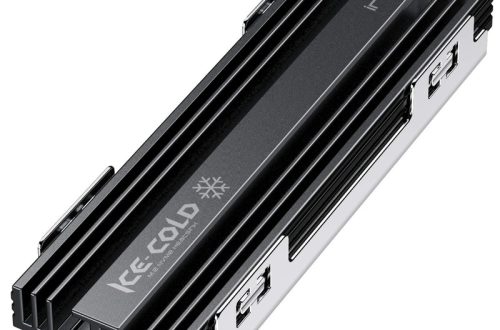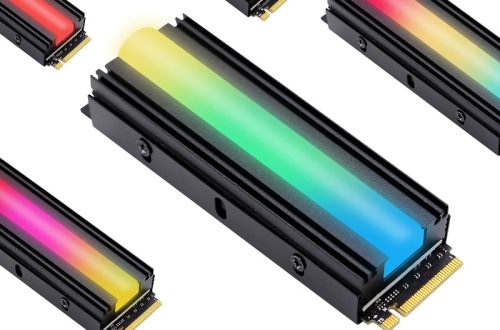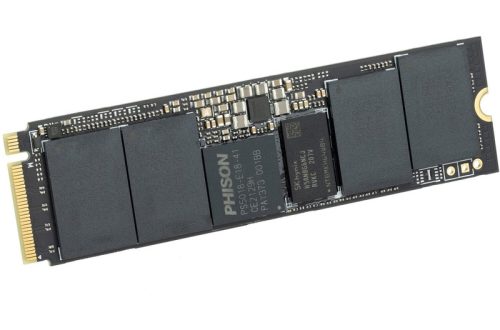Understanding CPU and Motherboard Compatibility
Before upgrading your CPU, it’s crucial to understand compatibility between your motherboard and the new processor. This step ensures that the CPU you purchase can fit and function with your existing motherboard. Not all CPUs are compatible with all motherboards due to differences in socket types, chipset support, and power requirements. To avoid costly mistakes, take time to verify this information before proceeding with the upgrade.
Checking Your Motherboard’s CPU Socket Type
To start, identify your motherboard’s CPU socket type. This socket is essentially the interface where the CPU connects to the motherboard. Common types include LGA (Land Grid Array) and PGA (Pin Grid Array), among others. You can find this information by consulting your motherboard’s manual, checking the manufacturer’s website, or using system information software.
Utilizing Tools for CPU Compatibility Research
Numerous online tools aid in CPU compatibility research. Websites like CPU-Upgrade offer databases where you can input your motherboard model and find a list of compatible processors. You can also turn to community forums like Reddit or Tom’s Hardware for advice. Such resources simplify the research process, helping you make an informed decision on which CPU to purchase for your upgrade.
Tools and Preparations for CPU Upgrade
Preparing for a CPU upgrade requires the right tools and safety measures. It’s important to gather all the necessary items before beginning the process. This helps prevent damage to your new CPU and other PC components.

List of Necessary Tools and Equipment
When upgrading your CPU, here are the essential tools you will need:
- Screwdriver: A Phillips head screwdriver often works for unscrewing the computer case and heatsink.
- Anti-static wristband: This will help to prevent static electricity from damaging sensitive components.
- Thermal paste: A new application of thermal paste is critical for effective heat transfer from the CPU to the heatsink.
- Soft cloth or paper towels: Useful for cleaning off old thermal paste from the CPU and heatsink.
- Isopropyl alcohol: Helps remove old thermal paste residue.
- New CPU: Ensure it is compatible with your motherboard’s socket and chipset.
Having these tools at hand will streamline the CPU upgrade process while also avoiding unnecessary trips to the store during the installation.
Safety Measures and Anti-Static Precautions
Electrostatic discharge (ESD) is harmful to computer components. Here’s how to minimize ESD risk during a CPU upgrade:
- Wear an anti-static wristband: Attach it to a grounded object to prevent ESD.
- Work on a non-static surface: Avoid carpets; use a wooden table or a static mat instead.
- Ground yourself: Before handling components, touch a grounded metal object to discharge any static electricity.
- Handle components by the edges: Avoid touching any circuitry or contacts directly.
By carefully preparing and employing these safety measures, you reduce the risk of damaging your computer’s components during the upgrade process.
Backing Up Your Data
Before starting any CPU upgrade, backing up your data is a critical step. This precaution safeguards against potential data loss if something goes wrong during the upgrade process. Changing hardware components like the CPU doesn’t typically affect your hard drive directly. However, unexpected issues can arise. Therefore, having a recent backup gives you peace of mind that your important files are safe.
Importance of Data Backup Before Upgrading
The significance of data backup cannot be overstated. Hardware upgrades, while generally safe, can incur risks. Power surges, static electricity, or simple human error during the installation might lead to system errors. These can affect your data’s integrity. To avoid taking any chances, ensure you have a backup before proceeding with the CPU upgrade.
Best Practices for Data Backup
Adhering to best practices for data backup ensures your files remain intact and quickly recoverable. Here’s what you should do:
- Use an external drive: Copy your critical data onto an external hard drive or USB stick.
- Employ cloud services: Utilize cloud backup services for an off-site copy of your data.
- Verify the backup: After backing up, confirm the files are accessible and the backup is not corrupted.
- Keep multiple backups: If possible, maintain more than one backup method for added security.
Following these steps prepares you to upgrade your CPU without fearing data loss.
Removing the Old CPU
Before installing the new CPU, you must carefully remove the old one. This part of the process is delicate and requires attention to detail to avoid damaging the components.
Steps to Safely Remove the Heatsink or Fan
First, power down your PC and disconnect all cables. Open the case to access the motherboard. Locate the heatsink or fan that covers the CPU. These are secured with clips or screws which you need to detach gently. Unplug the fan’s power connector from the motherboard. Carefully lift the heatsink or fan off the CPU after unscrewing or unclipping.
Cleaning Off Old Thermal Paste
Once the cooling unit is removed, clean the old thermal paste from the CPU. Use a soft cloth or paper towel lightly dampened with isopropyl alcohol. Rub gently until the paste is gone. Allow the CPU surface to dry completely before proceeding.

Proper Removal of the Existing Processor
To remove the CPU, first locate the metal lever next to the socket. Gently push down and out to release the lever and lift it up. This action opens the CPU socket. Carefully lift the processor by its edges and set it aside in a safe place. It’s important to avoid touching the pins or the bottom of the CPU where the contacts are.
Installing the New CPU
Once you have carefully removed the old CPU, you’re ready to install the new one. This is a critical step in the upgrading process. Handling the CPU properly and ensuring correct installation are key to your computer’s performance.
Aligning and Placing the New Processor
To install the new CPU:
- Align the processor with the socket: Match the CPU’s notches with those on the socket.
- Avoid touching the CPU pins: Handle the processor by the edges to prevent damage.
- Place the CPU gently: Ensure the processor sits flat in the socket without force.
Locking the CPU in the Socket
Secure the new CPU in its position:
- Lower the retention arm: Push the lever gently to lock the CPU in place.
- Engage the socket’s lever: This will ensure the CPU is secured firmly.
- Avoid using excessive force: Be gentle to prevent bending pins or damaging the socket.
Applying Thermal Paste Correctly
Applying thermal paste is important for heat management:
- Use a small amount: A pea-sized dot of thermal paste is often sufficient.
- Place it at the center: Directly onto the top of the CPU.
- Let the heatsink spread it: The pressure from reattaching the heatsink will spread the paste.
Proper application of thermal paste enhances heat transfer from the CPU to the heatsink, which is crucial for maintaining optimal operating temperatures and preventing overheating. With the new processor installed and thermal paste applied, you’re ready to reassemble your PC.
Reassembling and Initial Testing
After installing your new CPU and applying thermal paste, reassembly of your computer is the next step. Proper reassembly ensures that all components are securely in place and ready for testing.
Reattaching the Cooling Components
First, reattach the heatsink or fan to the CPU. Align it accurately and use your screwdriver to secure it with screws or clips. Reconnect the fan’s power cable to the motherboard. Make sure the cooling components sit flush against the CPU for optimal heat dissipation.
Closing Up the Computer and Powering On
Once the cooling components are in place, close the computer case. Ensure all screws are tightened and cables are managed properly to avoid any obstruction. Connect the power supply and all peripherals. Now, power on your computer to initiate the initial testing phase. You should see a startup screen indicating that the CPU is correctly installed and functioning.

BIOS Update and Configuration
Ensuring your computer’s BIOS is up to date is a pivotal step following a CPU upgrade. The BIOS or Basic Input/Output System is the firmware that initializes your PC’s hardware during the boot-up process. Updating the BIOS can improve compatibility with new hardware and enhance system stability.
Checking BIOS Version and CPU Recognition
Turn on your computer and enter the BIOS setup. You can usually do this by pressing a key like F2, DEL, or F10 as the computer starts. Within the BIOS menu, look for an information section to find the current BIOS version. Check that the BIOS recognizes the new CPU, which confirms proper installation. If the BIOS does not recognize the new processor, consult the motherboard’s user manual or support website for assistance.
Adjusting BIOS Settings for Optimal Performance
Navigate the BIOS menus to find performance settings. Adjusting these may include setting the correct CPU clock speed or enabling virtualization features. It’s crucial to only change settings you understand to avoid system instability. If unsure, default or auto-configuration options are typically safe choices. Be sure to save your changes before exiting the BIOS setup. If you encounter issues, resetting to default settings can often resolve them. After adjusting your BIOS, your upgraded CPU is ready for optimal performance, marking a successful upgrade.
Post-Installation Checks
After upgrading and configuring your new CPU, some critical post-installation checks are essential. These steps help ensure the upgrade contributes to system performance and longevity effectively.
Monitoring CPU Temperature and Performance
After any CPU upgrade, monitoring temperature and performance is key. A normal CPU temperature under load is typically below 80 degrees Celsius.
- Use software like HWMonitor or Core Temp.
- Keep an eye on temperatures during heavy use.
- Look for readings within a safe range.
Assessing performance involves:
- Running programs that use significant CPU resources.
- Checking for improved speed and response times.
- Using benchmarking tools to compare new CPU stats with old ones.
Ensuring System Stability Through Stress Testing
Stress testing is crucial to ensure the CPU’s reliability under extreme conditions. Proper stress testing can identify potential issues early, allowing for adjustments.
To perform stress testing:
- Use software like Prime95 or IntelBurnTest.
- Run the test for a sustained period, observing system responses.
- Monitor for system crashes or performance drops.
If issues arise:
- Re-check thermal paste application and heatsink attachment.
- Review BIOS settings for potential misconfigurations.
- Ensure that all internal connections are secure.
Successful post-installation checks lead to a stable and efficient computing experience. Regular monitoring after installation helps maintain this stability long-term.




